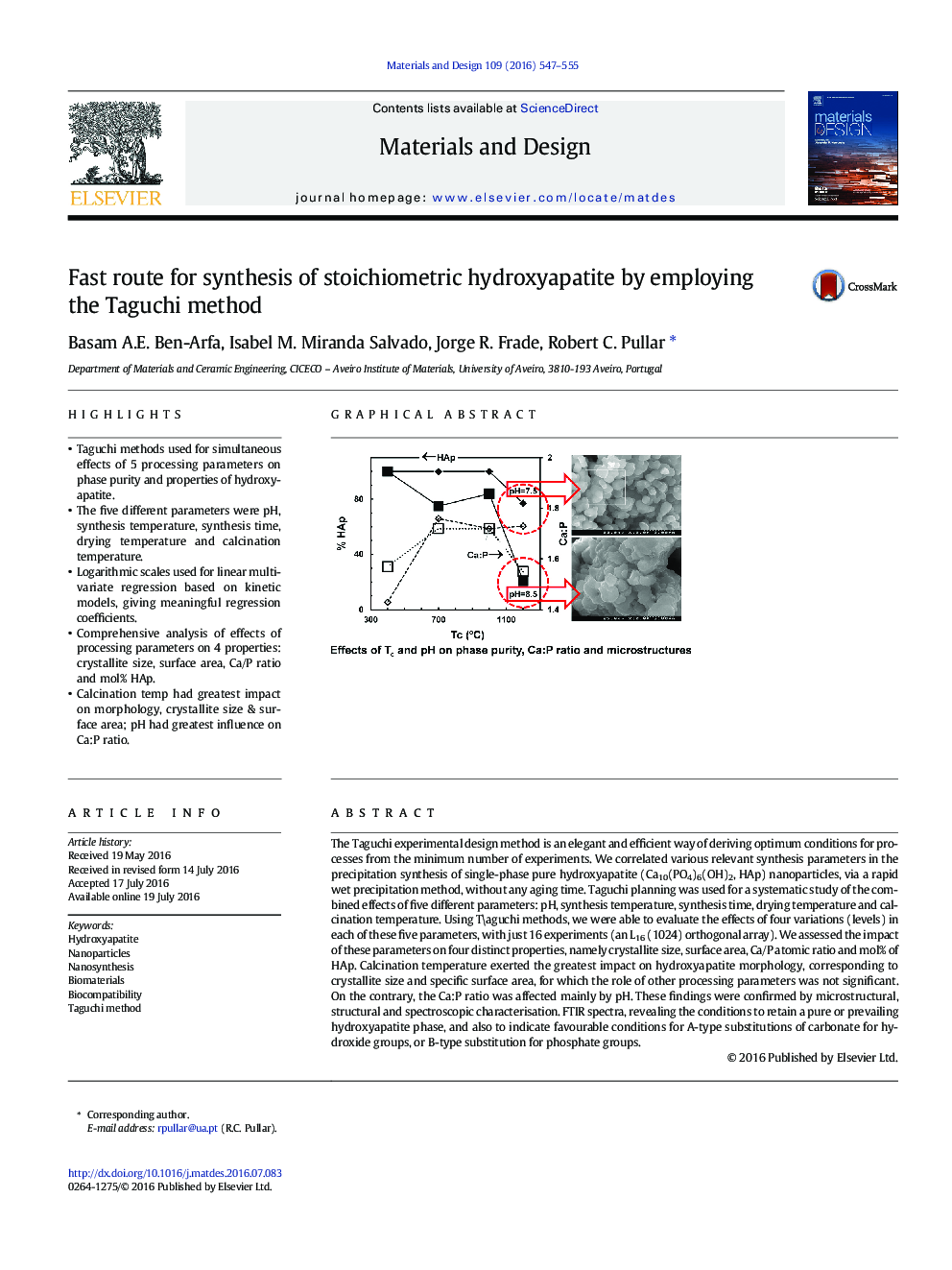| کد مقاله | کد نشریه | سال انتشار | مقاله انگلیسی | نسخه تمام متن |
|---|---|---|---|---|
| 827727 | 1470273 | 2016 | 9 صفحه PDF | دانلود رایگان |
• Taguchi methods used for simultaneous effects of 5 processing parameters on phase purity and properties of hydroxyapatite.
• The five different parameters were pH, synthesis temperature, synthesis time, drying temperature and calcination temperature.
• Logarithmic scales used for linear multivariate regression based on kinetic models, giving meaningful regression coefficients.
• Comprehensive analysis of effects of processing parameters on 4 properties: crystallite size, surface area, Ca/P ratio and mol% HAp.
• Calcination temp had greatest impact on morphology, crystallite size & surface area; pH had greatest influence on Ca:P ratio.
The Taguchi experimental design method is an elegant and efficient way of deriving optimum conditions for processes from the minimum number of experiments. We correlated various relevant synthesis parameters in the precipitation synthesis of single-phase pure hydroxyapatite (Ca10(PO4)6(OH)2, HAp) nanoparticles, via a rapid wet precipitation method, without any aging time. Taguchi planning was used for a systematic study of the combined effects of five different parameters: pH, synthesis temperature, synthesis time, drying temperature and calcination temperature. Using T\aguchi methods, we were able to evaluate the effects of four variations (levels) in each of these five parameters, with just 16 experiments (an L16 (1024) orthogonal array). We assessed the impact of these parameters on four distinct properties, namely crystallite size, surface area, Ca/P atomic ratio and mol% of HAp. Calcination temperature exerted the greatest impact on hydroxyapatite morphology, corresponding to crystallite size and specific surface area, for which the role of other processing parameters was not significant. On the contrary, the Ca:P ratio was affected mainly by pH. These findings were confirmed by microstructural, structural and spectroscopic characterisation. FTIR spectra, revealing the conditions to retain a pure or prevailing hydroxyapatite phase, and also to indicate favourable conditions for A-type substitutions of carbonate for hydroxide groups, or B-type substitution for phosphate groups.
Figure optionsDownload as PowerPoint slide
Journal: Materials & Design - Volume 109, 5 November 2016, Pages 547–555
